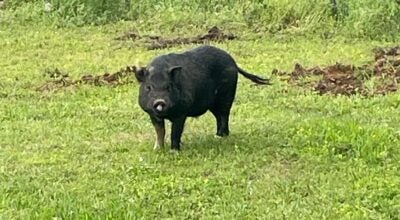County in severe drought
Published 12:33 am Sunday, October 16, 2016
On Thursday, local sod farmer Gary Coleman was hoping for someone to do a rain dance to bring some relief to parched Lafayette County.
It must have worked.
Lafayette County received about an inch of rain Friday, washing away some of the dust from the area’s driest fall that most farmers can remember.
“It’s the driest year we’ve seen,” Coleman said, who owns Tula Turf. “We have irrigation rights off the Yocona River but it’s about dried up and our pond is dried up.”
While Friday’s rain was welcomed, it won’t be enough to bring Lafayette County out of the drought. According to the United States Drought Monitor, Lafayette County is in a severe drought. Most of Mississippi is experiencing drought conditions ranging from Abnormally Dry in the southern part of the state to Extreme Drought along the northeastern border.
National Weather Service meteorologist Steven Cromer said Lafayette County will need a “good couple of rainfalls” before drought numbers go down.
“It’s been a very dry and warm fall,” he said. “Most of the drought condition is from the lack of rain since August.”
The area has seen 36.28 inches of rain since January, which is 5.10 inches below normal.
“That’s not extreme,” Cromer said. “However, we’ve only had .43 of an inch of rain in September, which is 4.91 inches below normal. This is more of a sudden, short-term drought.”
The inch of rain that fell Friday may be the only rain Lafayette County sees for a couple of weeks. According to the NWS, only 20 percent chance of rain exists for late next week.
The warmer temperatures have helped create the drought conditions as well. During September, the average temperature was 4.8 degrees warmer than average. Since January, the average temperature is 2.1 higher than normal for the year, according to the NWS.
Cooler temps welcome
Coleman has owned his sod farm off Highway 331 in Tula since 1986. He’s hoping the cooler temperatures at night will help keep the small amount of rain from drying off quickly.
“We don’t lose the water near as bad when it’s cooler at night,” he said. “Even an inch will help because of that. The days are getting shorter so that helps as well.”
Coleman said he saw a 30 percent decrease in sod sales since August because of the drought.
“We’ve been able to keep good color on the grass because we could do some irrigation,” he said. “But people don’t want to put out grass if it’s not raining. We need the rain bad and we need it quick and we need it to stick around for a couple of days.”
Small farmers hurting
Mississippi State University Extension Service Area Agent Lance Newman said the drought will most hurt smaller farmers who rely on Mother Nature for irrigation.
While much of the fall row crops are ready for harvesting, the dry ground makes getting some crops like sweet potatoes harder.
“The ground is so hard,” Newman said. “You have to really dig them out and that can damage the potatoes.”
Cattle farmers are having to feed their cattle hay earlier than usual instead of grass that would have normally grown in September.
“The pastures have been severely affected,” Newman said. “
Newman said large, commercial farms generally have adequate irrigation systems, but even that can put a strain on the farmers’ business due to the extra expenses of having to rely solely on irrigation to keep the ground moist.
Local farmer Doug Davis, owner of Yokna Bottom Farms said while the drought hasn’t affected his crops earlier in the season, he’s had a hard time getting the fall crops germinated.
“Carrots, beets, lettuce, they all like cool weather and it’s been hot and dry,” he said. “But overall, it hasn’t had a big impact on us since we have irrigation from our well.”





